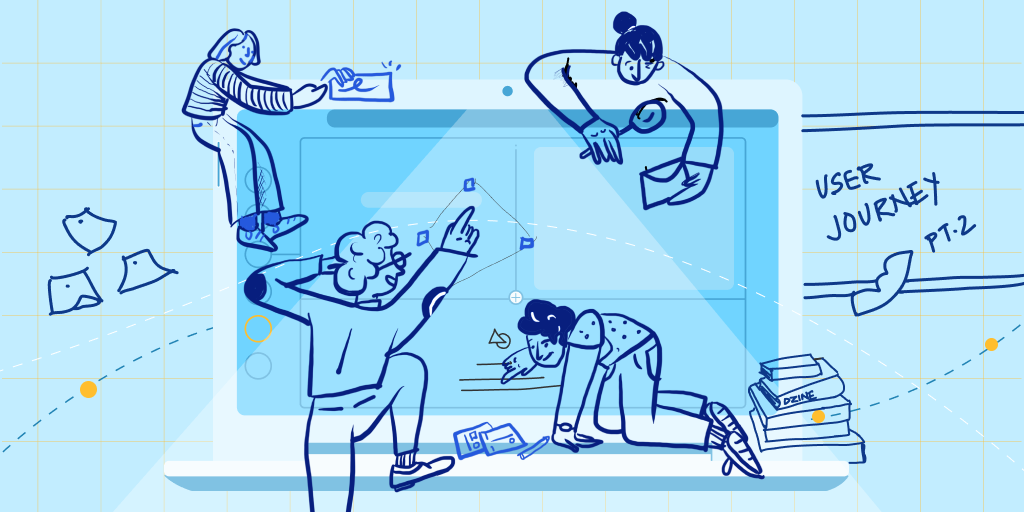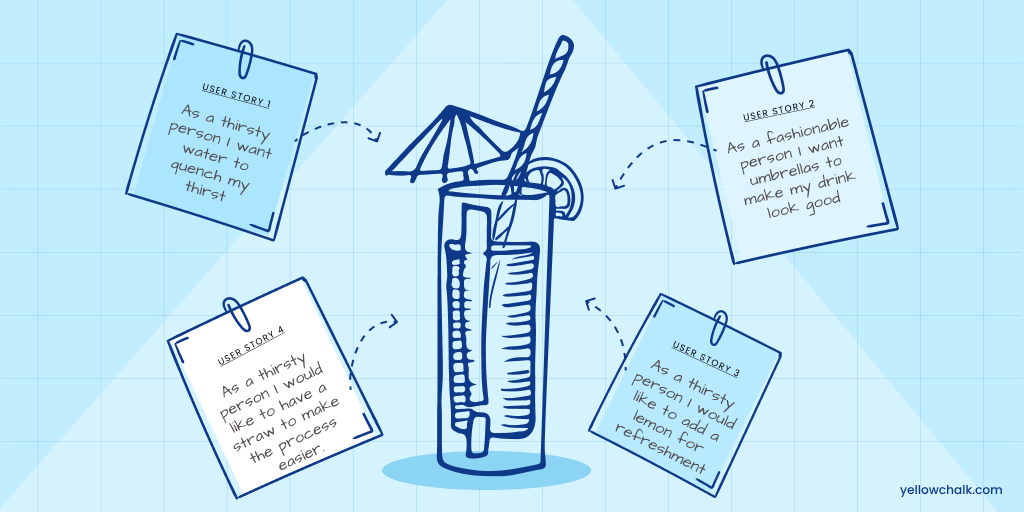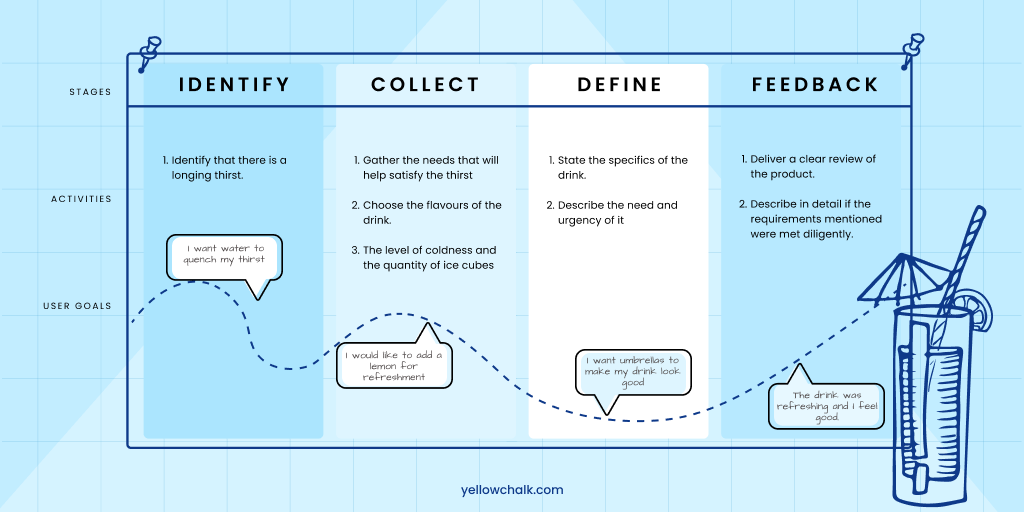GOT A UI/UX
DESIGN PROJECT?
Comparing Story Maps and Journey Maps in User Journey – Examining Their Similarities and Distinctions

It is not uncommon for individuals to become perplexed when attempting to choose the optimal map for analysing customer experience, such as a story map or journey map in the user journey. Both of these maps have recently grown popular in the corporate world, although they feature some minor distinctions. This article will provide a brief analysis of both story maps and journey maps and the advantages they provide to project teams.

An Overview of Story Maps
Story maps are a useful tool for presenting complex information in an easily understandable format for user journeys. By integrating text, images, and interactive elements like hyperlinks, audio, and video, they create a comprehensive picture. Enabling users to narrate stories, provide topic overviews, or illustrate element relationships, story maps effectively engage viewers and facilitate rapid comprehension of information.
Story mapping simplifies and streamlines the analysis of the customer experience, allowing for a comprehensive mapping process. This method entails sequencing stories to offer a detailed overview of customer interactions with a product. It involves evaluating effectiveness, pinpointing factors that influenced customer-product interaction, and identifying areas for potential future enhancement.
Mapping Out Narratives in the Form of Epics
Story maps, found on Ideascale’s blog, employ fundamental steps referred to as epics. A sequence or timeline organizes these epics, centring on the customer’s experience throughout their journey with the product.
The project team retains the flexibility to incorporate epics, be they individual or collective journeys, into the map at their discretion. Story maps serve as invaluable aids in comprehending a customer’s entire journey with a brand or product, encapsulating the ultimate objectives of their interaction.
The significance of Story Mapping remains indisputable. Employing this technique facilitates the structured arrangement of stories, offering enhanced visualization of narrative progression. This organized approach fosters a deeper understanding of the storyline and its multifaceted elements.
A story map is a useful tool for illustrating the overall experience of a product, the customer’s objectives, and the steps they have taken in order to reach their goal which also provides insight into the necessary improvements and requirements from the perspective of the customer.
Crafting a story map proves effective in pinpointing areas for the team’s focus to achieve their user engagement objectives. It also aids in aligning the team’s goals with those of the users and fosters a clearer understanding of their mutual objectives which helps to construct a story map and elucidates the entire product process hence connecting with the user and enabling quick recognition of upcoming business prospects. There are a number of benefits of selecting a story map, and now we will look at the same for journey maps.

Mapping a Course of Action
Journey maps are a great way to plot a course of action for any situation in user journey. They can help to visualize the steps to reach a desired outcome and provide a roadmap for success. Journey maps present an individual’s experience with your product, with precise data on their journey. It takes into account their initial sentiments and current feelings, unlike user mapping which just looks at the stages of the journey. It gives more room for the user’s emotional state in the process.
The components that make up a journey map include five main elements.
Involved Individuals
The focus of the journey map is the actor or subject. This may be a customer, an individual persona, or a collective of users.
Anticipated Outcomes
This section addresses the timeline within a journey map. It looks at what the individuals initially expected and what the results were. It is possible to modify expectations as market trends develop.
Different Stages or Ideological Systems
The voyage had multiple distinct legs that could be classified into distinct groups. These divisions correspond to separate phases of the journey, with each of them having numerous distinct steps.
Behaviors, Attitudes, and Feelings
The journey map highlights three intangible elements: actions, mindsets, and emotions. Actions drive the progression of stages, while mindsets influence user thoughts and expectations. Additionally, emotions are tracked using a dynamic line chart to illustrate the emotional state at each journey step.
Chances to Embark on a Trip by Mapping It Out
By using journey maps, you can gain insight into how the market reacts to your product and how users perceive it. This makes it easier to pinpoint issues in each phase and determine what caused them. You can then apply the improvements at each step. To assess the success of the changes, observe the users’ emotional state.
You will gain insight into what the future holds for your company and be able to identify the areas in which you can best meet the needs of your customers. In contrast to story maps that pay attention to specific steps and action mapping, journey maps center on the feelings and aims of users to elevate their experience.
Case Study: Enhancing a Mobile Banking App
Background
ABC Bank, a leading financial institution, aimed to improve its mobile banking app to offer a seamless and customer-centric experience. They embarked on a project to revamp the app’s functionalities and user interface to increase user engagement and satisfaction.
Journey Mapping Approach
Objective: Understand and Enhance User Experience
ABC Bank initiated a Journey Mapping exercise to comprehend the entire user journey across different touch points within the mobile banking app.
The Process
Identification of Touchpoints: The team identified key touchpoints, including account login, funds transfer, bill payments, and customer support interactions.
They gathered user feedback and conducted surveys to analyze emotions at each touchpoint, pinpointing instances of frustration (like login errors), satisfaction (such as seamless fund transfers), and also confusion (like the complexity of the bill payment process).
The Outcome
The Journey Mapping exercise revealed several critical insights:
Multiple security layers during the login process caused significant frustration for users which lead to considerable issues.
Fund transfer and bill payment processes were relatively smooth, leading to positive user experiences.
Fragmented customer support interactions lacked clarity, causing confusion for users seeking assistance.
Actions Taken
ABC Bank prioritized enhancing the login process by streamlining security measures without compromising safety.
They revamped the customer support interface to provide clearer guidance and more accessible help options.
Story Mapping Approach
Objective: Define Product Features and Prioritize Development
After gaining insights from the Journey Mapping exercise, ABC Bank moved on to Story Mapping to define and structure the mobile banking app’s features.
The Process
The team successfully identified and organized user stories centred around essential functionalities crucial for a seamless user experience, including ‘User Login,’ ‘Funds Transfer,’ ‘Bill Payment,’ and ‘Customer Support.’
Prioritization: They arranged these stories in a chronological sequence or thematic structure to create a roadmap, highlighting essential features and functionalities needed for each phase.
The Story Map played a crucial role in fostering collaboration among the development, design, and marketing teams, ensuring they were aligned with the overarching product vision.
The Outcome
The Story Mapping exercise led to a structured plan:
The identified user frustrations prompted the immediate need for attention to the ‘User Login’ feature, highlighting its significance as a primary focus.
The improvement focus was on ‘Customer Support’ to guarantee a seamless help experience within the app.
Actions Taken
The development team focused on revamping the login process by implementing a more user-friendly authentication method.
They redesigned the customer support feature to offer in-app assistance using chatbots and provide clearer guidance for issue resolution.
Comparison
Journey Mapping and Story Mapping served different purposes
Journey Mapping provided a holistic view of user experiences, highlighting pain points and emotional responses.
Story Mapping facilitated a structured approach to prioritize and develop features aligned with the user journey insights.
Conclusion
ABC Bank’s use of Journey Mapping and Story Mapping exemplifies how these methodologies complement each other. Journey Mapping uncovered user pain points and emotions, guiding the prioritization and structuring of features through Story Mapping. By combining these approaches, the bank successfully enhanced its mobile banking app, delivering a more user-centric and seamless experience.
In Summary
Conclusively, it’s worth noting that…
For individuals seeking deeper insights into market trends, customer feedback, and journeys, both journey maps and story maps offer valuable advantages and understanding the essential components required for crafting these maps is crucial for the user journey. Moreover, if this article proved helpful, delving into the distinctive elements of story maps is highly recommended.
Furthermore, fostering heightened communication between the involved parties is pivotal for achieving a successful resolution. Thus, facilitating enhanced dialogue between them becomes imperative to forge an agreement mutually advantageous to both sides. Ultimately, establishing an improved connection stands as a fundamental requirement for collaborative work leading to a satisfactory conclusion.
Also curious about app design, read our blog on Hybrid v/s Native apps.
